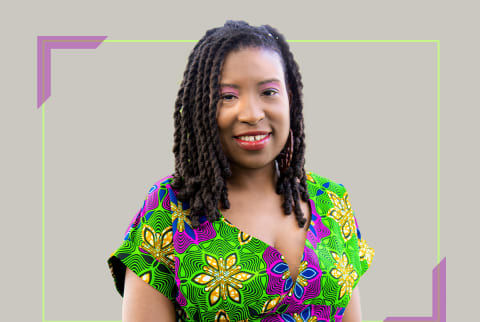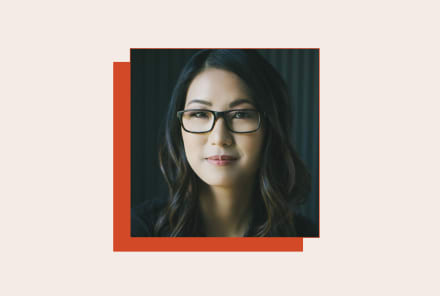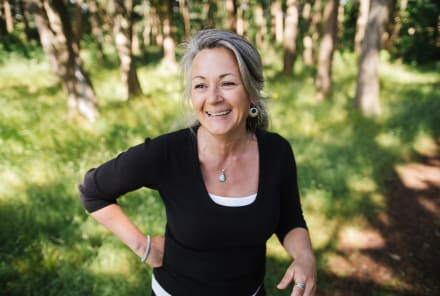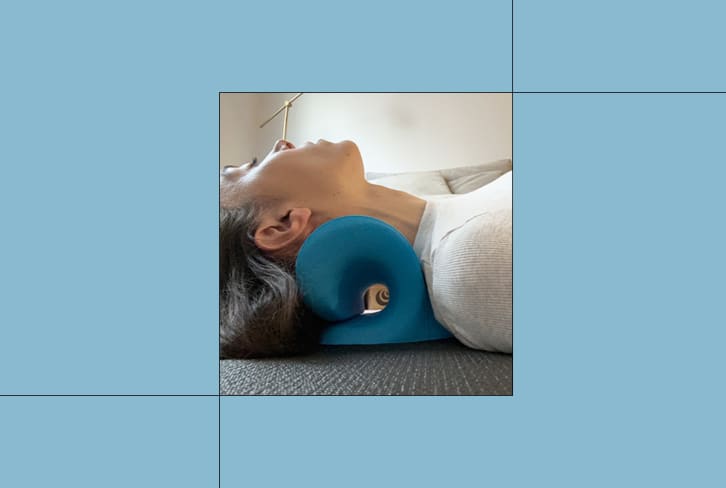Advertisement
My Autoimmune Medication Left Me With Osteoporosis At 32—How I Found A Better Way


As a 25-year-old law student at Cornell Law School, my life followed a relatively normal rhythm. Amidst the endless workload, I managed to carve out time for activities like running, weightlifting, and maintaining a vibrant social life.
Even amidst the hustle, I squeezed in a brief visit to my family in New Jersey between final exams. December 16th, 2002, was just another typical day spent at home before heading back to law school.
On the morning of December 17th, my mother packed my car with snacks to get me through my second stint of exams and sent me on my way. A few hours later, I realized that December 17th would be a day I’d remember forever.
The first sign something was off
As I traversed through Scranton, Pennsylvania on my usual journey back to Cornell, an unsettling and unexpected disruption occurred: I experienced double vision. One moment, my sight was crisp; the next, everything appeared blurred. Clarity would come and go, but I assumed it was just a side effect of high stress from finals or perhaps a sign I needed more sleep.
I made a pit stop along the way, splashing water on my face in a desperate attempt to shake off the drowsiness and alleviate the blurred vision. Despite my efforts, nothing seemed to alleviate the symptoms. After my second failed attempt, I realized I had no choice but to dial 911.
My family met me at the hospital, expecting the doctor to deliver a diagnosis of some kind. Instead, the medical team told me everything was fine and that the MRI brain scan and eye exams were normal.
I left the hospital, still experiencing blurred vision every few hours. Out of necessity, I consulted the dean at Cornell who graciously allowed me to take my last exam in January. I was determined to figure out what was going on and eager to return to my normal routine.
The path to a diagnosis
I visited ophthalmologists who would tell me that something was wrong, but they couldn’t tell what it was. A week later, during a Christmas gathering, I shared my concerns with my cousin, a pediatrician. While not certain, she proposed exploring myasthenia gravis, an autoimmune condition she recalled from medical school, which aligned with my vision issues.
I decided to follow my cousin's suggestion and approached a neurologist I had intended to see. Despite being initially dismissed due to my cousin's specialty (he was convinced she knew “nothing” as a pediatrician), he reluctantly agreed to conduct tests. I underwent an acetylcholine receptor antibody test and a Tensilon test, both of which surprisingly confirmed the diagnosis: myasthenia gravis.
Why is myasthenia gravis dangerous?
Life after I was diagnosed with myasthenia gravis
Following my diagnosis, I embarked on a search for a specialist to provide me with the necessary treatment. During this time, I required special accommodations for my exams, which I felt ashamed to tell anyone for a long time. Because you couldn’t see my symptoms, I felt embarrassed and feared people would think I was faking it.
Given I couldn’t drive with intermittent blurred vision, I was forced to tell my close friends at school and ask to carpool. Admitting my dependence on them was difficult, but I didn’t have a choice and I hoped this wouldn’t last forever.
The initial specialist I encountered had the worst bedside manner imaginable. When my mother inquired about the typical prognosis for myasthenia gravis, as we were still grappling with understanding the condition, his response was shockingly blunt: "Many of my patients die." Needless to say, we swiftly exited that room and never returned.
While searching for another specialist, I was put on a medication called Mestinon, but it didn’t work well to tame my symptoms.
Onto another specialist I went
After connecting with a specialist with a deeper understanding of my condition compared to the previous one, I was prescribed an immunosuppressant drug. These medications are typically prescribed to transplant patients to help prevent the body from attacking itself, or in that case, a new organ.
I took this drug for four years. It worked well enough for me to continue my life, which now consisted of 80-100 hour work weeks at a law firm in New York City. To say the least, it was a high-stress period of my life.
Because of this constant stress and lack of sleep, I would get myasthenia gravis flare-ups where my blurred vision would take over, even while I was on the immunosuppressant drug. So, my doctor decided to put me on a steroid called prednisone, in addition to the other medication I was already taking. The hope was to keep me stable, so I could keep up with my life at the law firm.
I agreed to go on this medication because the only side effect I was aware of was weight gain, which I was definitely willing to risk to have stable vision. Looking back, I wish I had been told more about the side effects of prednisone.
Unfortunately, because of my persistent flares, I was on higher doses more than I would have liked.
When I realized myasthenia gravis was affecting my whole body:
After the surgery
After the surgery, my symptoms got worse. I felt defeated. I would drive by the East River in New York City and see cars driving down the middle of it. The muscle-nerve connection in my hands and feet was compromised, leaving me unable to walk properly or make a fist.
I visited the doctor and he told me (retroactively) that it would get worse before it got better, and that I should now go back on the medication I had hoped to swear off forever with this surgery.
This time, I inquired about the potential side effects, armed with information from my own research. However, I was reassured by the medical team that as a young person, I would be unaffected and need not worry about risks such as osteoporosis, diabetes, glaucoma, or any other complications.
So once again, I followed the advice and went back on the medication. My symptoms cleared, so I was back in full force at work.
During a routine visit to my OB/GYN, she inquired about my prolonged use of prednisone and its known side effects and decided to conduct a test for osteoporosis as a precautionary measure. She was correct in her suspicion: I had osteoporosis at the age of 32.
Life after my second diagnosis
I felt frustrated with my former doctor. While I didn't anticipate him foreseeing my osteoporosis diagnosis, I did expect a deeper understanding of the side effects associated with the medication he had prescribed for years. If there was anything I could’ve done to prevent it, I would have.
I visited a specialist for this osteoporosis diagnosis but left the appointment feeling lost. She told me that while there are medications I can take, they’ll likely impact my fertility. At this point, I was 32, unmarried, and knew for certain I wanted to have kids in the future. However, she recommended a high dose of vitamin D to support my bone health and encouraged me to aim to discontinue prednisone before turning 40.
I figured it was time to try something else. So, I followed my gut and took the leap into the world of holistic care and booked an appointment with a naturopathic doctor who helped me get off prednisone within a month of my first visit, thanks to holistic healing practices and plenty of lifestyle changes.
How I manage myasthenia gravis
It was clear from the beginning of this holistic healing journey that my fast-paced, low-sleep, and high-stress lifestyle was taking a toll on my body. I quit the law firm, opting for a lower-stress job and committed to putting my health first.
In addition, I stopped eating dairy, started juicing, eating organically grown food, and limited beans, lectins, and grains in my diet per the recommendation of my naturopathic doctor and my own research. I also started seeing a chiropractor who taught me about the importance of environmental toxins in your home, so I swapped out my cleaning products for more natural alternatives and swapped out plastic for glass when I could.
These changes were welcomed by me. I had tried three medications, endured painful tests, and even got surgery that didn’t help my symptoms. So in the grand scheme of things, this was a small price to pay, but the one that finally worked.
I’ve had myasthenia gravis flare-ups twice since I made these changes, and that was only when I didn’t follow the dietary recommendations. It was clear that I had to be strict about these changes, but it was also gratifying to know that what I was doing was actually working.
Why I’m passionate about self-advocacy in healthcare
This journey was beyond difficult, but one I’m grateful for in the long run because now I get to teach others the power of self-advocacy. My best advice can be made into four simple, actionable reminders:
- Ask questions: You’ll sound like an annoying toddler constantly asking “Why?” when your doctor tells you something, but it’s important. They don’t always know what needs to be explained further because it’s second nature to them. If a question pops into your head, ask it.
- Get a second (or third) opinion: If I stopped at the first specialist I saw I would not be where I am today. Follow your gut. Find physicians who have a different approach, and include all of those ideas in your decision-making process. It doesn’t have to be black and white, you can incorporate advice from a plethora of different medical strategies to find the balance that fits your needs and makes you feel cared for.
- Take a hard look at your lifestyle: I have seen firsthand how significantly stress can impact your overall health. While it’s not always possible to resort to a slow-paced lifestyle entirely, finding ways to slow down and have boundaries with your work-life balance is an act of self-care.
- Don’t underestimate the impact of your food choices. I saw firsthand how my symptoms improved after eliminating dairy and eating organically grown whole foods. Our food feeds every cell in our body and can make a significant impact. Remember that we can vote for our health every time we put a fork in our mouth.
I always say, if your health is a game, you are the coach. You hire the players. If they aren’t playing well, fire them and get new ones. You’ll build a team that wins gold, but not if you don’t try.
Watch Next
Enjoy some of our favorite clips from classes
Enjoy some of our favorite clips from classes
What Is Meditation?
Mindfulness/Spirituality | Light Watkins
Box Breathing
Mindfulness/Spirituality | Gwen Dittmar
What Breathwork Can Address
Mindfulness/Spirituality | Gwen Dittmar
The 8 Limbs of Yoga - What is Asana?
Yoga | Caley Alyssa
Two Standing Postures to Open Up Tight Hips
Yoga | Caley Alyssa
How Plants Can Optimize Athletic Performance
Nutrition | Rich Roll
What to Eat Before a Workout
Nutrition | Rich Roll
How Ayurveda Helps Us Navigate Modern Life
Nutrition | Sahara Rose
Messages About Love & Relationships
Love & Relationships | Esther Perel
Love Languages
Love & Relationships | Esther Perel

















